-
 Bitcoin
Bitcoin $101,898.5005
-0.75% -
 Ethereum
Ethereum $2,258.1125
-1.07% -
 Tether USDt
Tether USDt $1.0004
0.01% -
 XRP
XRP $2.0178
-2.93% -
 BNB
BNB $624.0243
-1.53% -
 Solana
Solana $134.3298
-0.90% -
 USDC
USDC $0.9999
0.01% -
 TRON
TRON $0.2675
-2.05% -
 Dogecoin
Dogecoin $0.1538
-1.96% -
 Cardano
Cardano $0.5482
-1.11% -
 Hyperliquid
Hyperliquid $35.5636
5.45% -
 Bitcoin Cash
Bitcoin Cash $453.4902
-1.66% -
 Sui
Sui $2.5134
-2.97% -
 UNUS SED LEO
UNUS SED LEO $9.1292
1.77% -
 Chainlink
Chainlink $11.8457
-1.60% -
 Stellar
Stellar $0.2312
-2.73% -
 Avalanche
Avalanche $16.9721
0.29% -
 Toncoin
Toncoin $2.7549
-3.82% -
 Shiba Inu
Shiba Inu $0.0...01081
-1.10% -
 Litecoin
Litecoin $80.8250
-0.71% -
 Hedera
Hedera $0.1374
0.21% -
 Monero
Monero $305.4827
-2.36% -
 Ethena USDe
Ethena USDe $1.0006
0.00% -
 Dai
Dai $1.0000
-0.01% -
 Polkadot
Polkadot $3.2085
-3.12% -
 Bitget Token
Bitget Token $4.0845
-3.13% -
 Uniswap
Uniswap $6.3353
-1.63% -
 Pi
Pi $0.5085
-0.70% -
 Pepe
Pepe $0.0...08913
-3.82% -
 Aave
Aave $232.7090
-0.58%
How to read the head and shoulders bottom pattern of RSI? Is this pattern common?
The head and shoulders bottom pattern on the RSI can signal trend reversals in crypto, but traders should use additional indicators for confirmation due to market volatility.
May 23, 2025 at 02:49 am
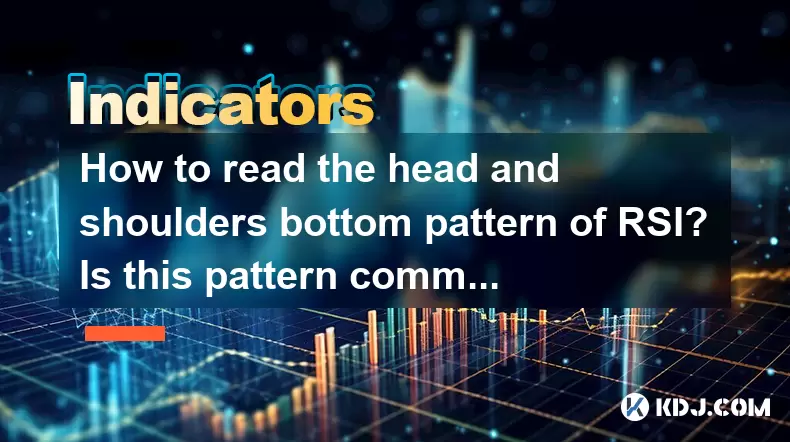
Understanding the head and shoulders bottom pattern in the context of the Relative Strength Index (RSI) can be a valuable tool for cryptocurrency traders. The RSI is a momentum oscillator that measures the speed and change of price movements. When used to identify the head and shoulders bottom pattern, it can signal potential trend reversals from bearish to bullish. In this article, we will delve into how to read this pattern on the RSI, its significance, and whether it is a common occurrence in the cryptocurrency market.
What is the Head and Shoulders Bottom Pattern?
The head and shoulders bottom pattern, also known as an inverse head and shoulders, is a bullish reversal pattern that typically forms at the end of a downtrend. It consists of three troughs: the left shoulder, the head, and the right shoulder. The head is the lowest point, while the left and right shoulders are higher than the head but roughly at the same level. A neckline, which is a resistance level, connects the highs of the pattern.
Identifying the Head and Shoulders Bottom Pattern on RSI
To identify the head and shoulders bottom pattern on the RSI, traders need to focus on the RSI chart rather than the price chart. Here’s how to do it:
- Look for the RSI to fall into oversold territory: The RSI typically ranges from 0 to 100, with readings below 30 considered oversold. The head and shoulders bottom pattern often begins with the RSI dipping into this zone.
- Identify the three troughs: On the RSI chart, you should see three distinct troughs. The middle trough (the head) should be the lowest, and the left and right troughs (the shoulders) should be higher but at approximately the same level.
- Draw the neckline: Connect the highs between the left shoulder and the head, and between the head and the right shoulder. This line is the neckline, which is crucial for confirming the pattern.
- Watch for the breakout: The pattern is confirmed when the RSI breaks above the neckline. This breakout suggests a potential reversal from a downtrend to an uptrend.
Significance of the Head and Shoulders Bottom Pattern on RSI
The head and shoulders bottom pattern on the RSI is significant because it can provide early signals of a trend reversal. When the RSI forms this pattern, it indicates that the selling pressure is weakening, and buyers are starting to gain control. This can be a strong signal for traders to consider entering long positions.
Is the Head and Shoulders Bottom Pattern Common in Cryptocurrency?
The head and shoulders bottom pattern is not as common as some other technical patterns, but it can still be observed in cryptocurrency markets. The frequency of this pattern can vary depending on the time frame being analyzed. On shorter time frames, such as 1-hour or 4-hour charts, the pattern may appear more frequently than on daily or weekly charts. However, due to the volatile nature of cryptocurrencies, traders should always confirm the pattern with additional indicators and price action before making trading decisions.
How to Trade Using the Head and Shoulders Bottom Pattern on RSI
Trading based on the head and shoulders bottom pattern on the RSI involves several steps:
- Confirm the pattern: Ensure that the RSI has formed the three troughs and that the neckline has been established. Wait for the RSI to break above the neckline to confirm the pattern.
- Enter a long position: Once the pattern is confirmed, consider entering a long position. This can be done by buying the cryptocurrency or by entering a long position on a futures contract.
- Set a stop-loss: Place a stop-loss order just below the right shoulder on the price chart to manage risk. This helps protect against the possibility that the pattern fails and the downtrend continues.
- Set a target: Calculate the potential price target by measuring the distance from the head to the neckline on the RSI chart. Project this distance upward from the point where the RSI breaks the neckline. This gives you an estimate of how far the price might rise.
Practical Example of the Head and Shoulders Bottom Pattern on RSI
Let's consider a practical example to illustrate how to read the head and shoulders bottom pattern on the RSI for a cryptocurrency like Bitcoin (BTC).
- Identify the downtrend: Suppose Bitcoin has been in a downtrend, with the RSI dipping into oversold territory.
- Spot the three troughs: On the RSI chart, you notice three troughs. The first trough (left shoulder) is at an RSI of 28, the second trough (head) is at an RSI of 20, and the third trough (right shoulder) is at an RSI of 27.
- Draw the neckline: Connect the highs between the left shoulder and the head, and between the head and the right shoulder. The neckline is at an RSI of 35.
- Confirm the breakout: The RSI breaks above the neckline at 35, confirming the head and shoulders bottom pattern.
- Enter a long position: Based on the confirmed pattern, you decide to enter a long position on Bitcoin.
- Set a stop-loss: You place a stop-loss just below the right shoulder on the price chart to manage risk.
- Set a target: The distance from the head (RSI 20) to the neckline (RSI 35) is 15 points. Project this distance upward from the breakout point (RSI 35) to get a target of RSI 50. On the price chart, this might translate to a specific price target for Bitcoin.
Additional Considerations
While the head and shoulders bottom pattern on the RSI can be a powerful tool, it should not be used in isolation. Traders should consider other technical indicators, such as moving averages, volume, and trend lines, to confirm the signal. Additionally, fundamental analysis and market sentiment can also play a role in making informed trading decisions.
Frequently Asked Questions
Q: Can the head and shoulders bottom pattern on the RSI be used for short-term trading?
A: Yes, the head and shoulders bottom pattern on the RSI can be used for short-term trading, particularly on shorter time frames like 1-hour or 4-hour charts. However, traders should be cautious and use additional indicators to confirm the pattern due to the increased volatility on these time frames.
Q: How reliable is the head and shoulders bottom pattern on the RSI?
A: The reliability of the head and shoulders bottom pattern on the RSI can vary. While it can provide early signals of a trend reversal, it is not foolproof. Traders should use additional confirmation tools and manage risk carefully to increase the pattern's reliability.
Q: Can the head and shoulders bottom pattern on the RSI be used in conjunction with other indicators?
A: Yes, the head and shoulders bottom pattern on the RSI can be used in conjunction with other indicators such as moving averages, volume, and trend lines. Combining multiple indicators can help confirm the pattern and increase the likelihood of a successful trade.
Q: Does the head and shoulders bottom pattern on the RSI work the same way for all cryptocurrencies?
A: The head and shoulders bottom pattern on the RSI can work similarly for different cryptocurrencies, but the effectiveness can vary due to differing levels of volatility and market dynamics. Traders should adapt their strategies based on the specific cryptocurrency they are trading.
Disclaimer:info@kdj.com
The information provided is not trading advice. kdj.com does not assume any responsibility for any investments made based on the information provided in this article. Cryptocurrencies are highly volatile and it is highly recommended that you invest with caution after thorough research!
If you believe that the content used on this website infringes your copyright, please contact us immediately (info@kdj.com) and we will delete it promptly.
- Cryptocurrencies, Coingecko, and Trending Tokens: What's Hot Now?
- 2025-06-23 23:05:12
- Bitcoin, Meerkat, and Onchain Engagement: A New Era of Crypto
- 2025-06-23 23:25:12
- Cloud Mining, Bitcoin, and XRP: A 2025 Perspective
- 2025-06-23 23:25:12
- Neo Pepe Coin: Meme Crypto with Explosive Potential?
- 2025-06-23 23:45:12
- FUNToken: Decoding Past Trends and Getting Started in the Gaming Crypto Sphere
- 2025-06-23 22:25:12
- Eyenovia Goes Crypto: A HYPE Treasury and Potential Rebrand
- 2025-06-23 23:45:12
Related knowledge

Is it contradictory that the moving average system is arranged in a bullish pattern but the DMI shows a decline in trend strength?
Jun 23,2025 at 11:43pm
Understanding the Moving Average and DMI RelationshipIn cryptocurrency trading, technical analysis plays a crucial role in identifying potential trends and making informed decisions. Two of the most commonly used indicators are the Moving Average (MA) and the Directional Movement Index (DMI). While both tools aim to provide insight into market direction...

What is the significance of the gap formed by the gap opening not being filled within five days?
Jun 23,2025 at 09:42pm
Understanding Gaps in Cryptocurrency TradingIn the world of cryptocurrency trading, a gap refers to a situation where the price of an asset jumps from one level to another without any trading activity occurring between those two levels. This often happens over weekends or holidays when the market is closed, and significant news or events occur that impa...
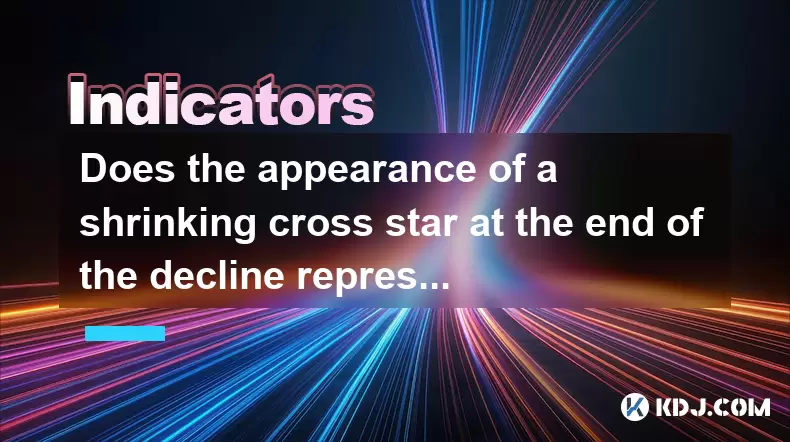
Does the appearance of a shrinking cross star at the end of the decline represent a signal to stop the decline?
Jun 24,2025 at 12:14am
Understanding the Shrinking Cross Star PatternIn the world of cryptocurrency trading, candlestick patterns play a crucial role in technical analysis. One such pattern is the shrinking cross star, which often appears at the end of a downtrend. This pattern consists of a candle with a small body, typically appearing after a series of bearish candles, and ...
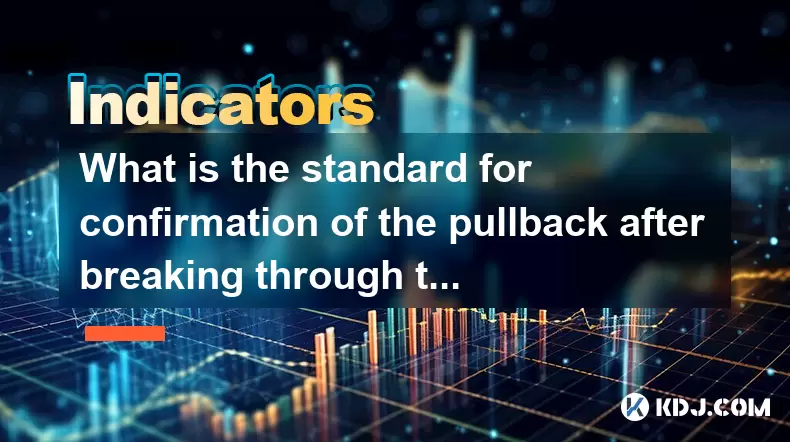
What is the standard for confirmation of the pullback after breaking through the neckline with large volume?
Jun 23,2025 at 11:28pm
Understanding the Neckline in Technical AnalysisIn technical analysis, the neckline is a critical support or resistance level that appears in chart patterns such as head and shoulders, double tops, and double bottoms. It typically connects two or more lows (in the case of a head and shoulders top) or highs (in the case of a head and shoulders bottom). W...
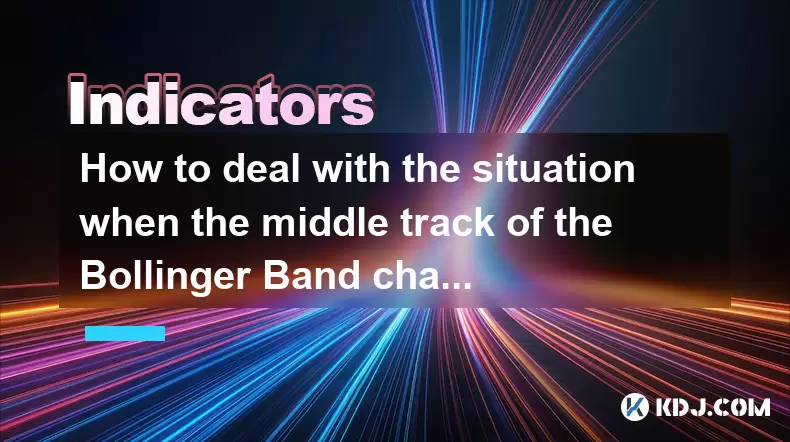
How to deal with the situation when the middle track of the Bollinger Band changes from support to resistance?
Jun 23,2025 at 11:22pm
Understanding the Bollinger Band Middle TrackThe Bollinger Band is a widely used technical indicator in cryptocurrency trading. It consists of three lines: the upper band, the lower band, and the middle track, which is typically a 20-period simple moving average (SMA). Traders often rely on the middle track as a dynamic support or resistance level. Howe...
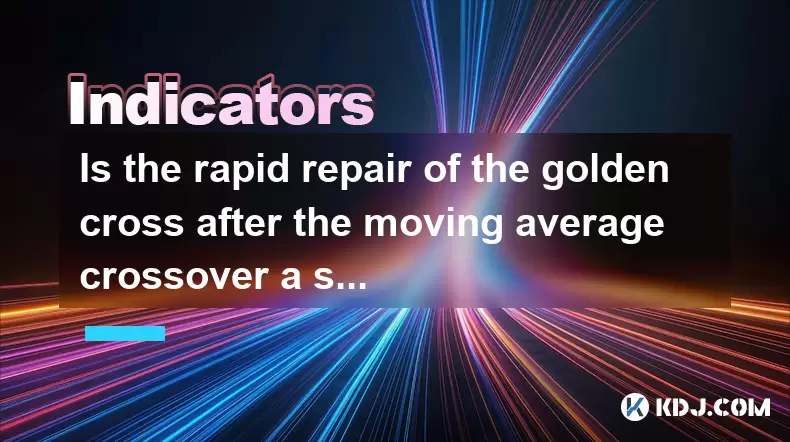
Is the rapid repair of the golden cross after the moving average crossover a signal of inducing short selling?
Jun 24,2025 at 12:01am
Understanding Moving Averages and Their Role in Technical AnalysisIn the realm of technical analysis, moving averages (MAs) are among the most widely used tools by traders to identify trends and potential reversals. These indicators smooth out price data over a specific time period, offering a clearer view of market direction. The two most common types ...

Is it contradictory that the moving average system is arranged in a bullish pattern but the DMI shows a decline in trend strength?
Jun 23,2025 at 11:43pm
Understanding the Moving Average and DMI RelationshipIn cryptocurrency trading, technical analysis plays a crucial role in identifying potential trends and making informed decisions. Two of the most commonly used indicators are the Moving Average (MA) and the Directional Movement Index (DMI). While both tools aim to provide insight into market direction...

What is the significance of the gap formed by the gap opening not being filled within five days?
Jun 23,2025 at 09:42pm
Understanding Gaps in Cryptocurrency TradingIn the world of cryptocurrency trading, a gap refers to a situation where the price of an asset jumps from one level to another without any trading activity occurring between those two levels. This often happens over weekends or holidays when the market is closed, and significant news or events occur that impa...

Does the appearance of a shrinking cross star at the end of the decline represent a signal to stop the decline?
Jun 24,2025 at 12:14am
Understanding the Shrinking Cross Star PatternIn the world of cryptocurrency trading, candlestick patterns play a crucial role in technical analysis. One such pattern is the shrinking cross star, which often appears at the end of a downtrend. This pattern consists of a candle with a small body, typically appearing after a series of bearish candles, and ...

What is the standard for confirmation of the pullback after breaking through the neckline with large volume?
Jun 23,2025 at 11:28pm
Understanding the Neckline in Technical AnalysisIn technical analysis, the neckline is a critical support or resistance level that appears in chart patterns such as head and shoulders, double tops, and double bottoms. It typically connects two or more lows (in the case of a head and shoulders top) or highs (in the case of a head and shoulders bottom). W...

How to deal with the situation when the middle track of the Bollinger Band changes from support to resistance?
Jun 23,2025 at 11:22pm
Understanding the Bollinger Band Middle TrackThe Bollinger Band is a widely used technical indicator in cryptocurrency trading. It consists of three lines: the upper band, the lower band, and the middle track, which is typically a 20-period simple moving average (SMA). Traders often rely on the middle track as a dynamic support or resistance level. Howe...

Is the rapid repair of the golden cross after the moving average crossover a signal of inducing short selling?
Jun 24,2025 at 12:01am
Understanding Moving Averages and Their Role in Technical AnalysisIn the realm of technical analysis, moving averages (MAs) are among the most widely used tools by traders to identify trends and potential reversals. These indicators smooth out price data over a specific time period, offering a clearer view of market direction. The two most common types ...
See all articles
























































































